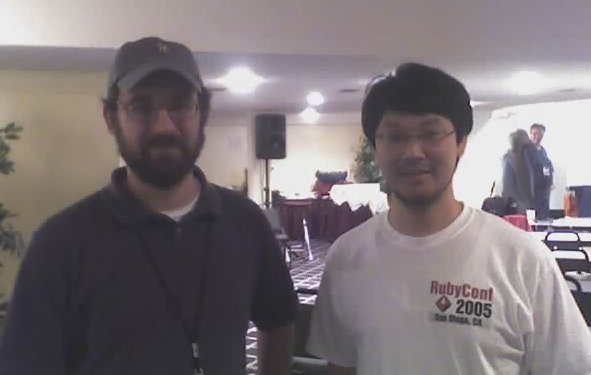|
By now you’ve read the trip reports , viewed the slides , and listened to the presentations . If you haven’t then shame on you, because there is lots of good stuff there. So I’ll just talk about what RubyConf did for me and how you should change your life to take advantage of my new found knowledge.
First of all I got to do fan boy things like thank Matz for Ruby.

Note that Martin Fowler snuck into the picture, but I had to smudge him out since my understanding is that you have to buy a book from him before you can take his picture.
I also got to have lots of great conversations with my fellow rubyists. Some of it was finally getting to put faces with irc nicks and blog entries. But the chance encounters at the lunch table and at the laptop filled tables during the panels were also edifying. I’m not a gregarious person by nature, so I am very glad I pushed myself to talk to people while at the conference. Talking things over with smart people that have similar goals is one of the best ways to generate interesting ideas. Now I just need to follow through on some of them.
Probably the best part though was just spending three days concentrating on something like Ruby with lots of other people that were also enthusiastic about it. You could smell the Ruby in the air. Many of us spend our days working to pay the mortgage, changing diapers, and cooking dinner. Even though those things are important it is good for the spirit to put all of that on hold for a few days and just geek out. That I am posting a blog entry should be proof enough that RubyConf was very energizing.
My plan is to go to at least two conferences a year. I went to No Fluff Just Stuff and RubyConf this year. And I am very happy with the results. Next year I plan to be at RubyConf again. I would also like to go to a large conference like OSCON or maybe an open space conference .
So what are you doing to make yourself a better programmer and advance your career? One of the things should be regularly attending conferences.
|
| 
